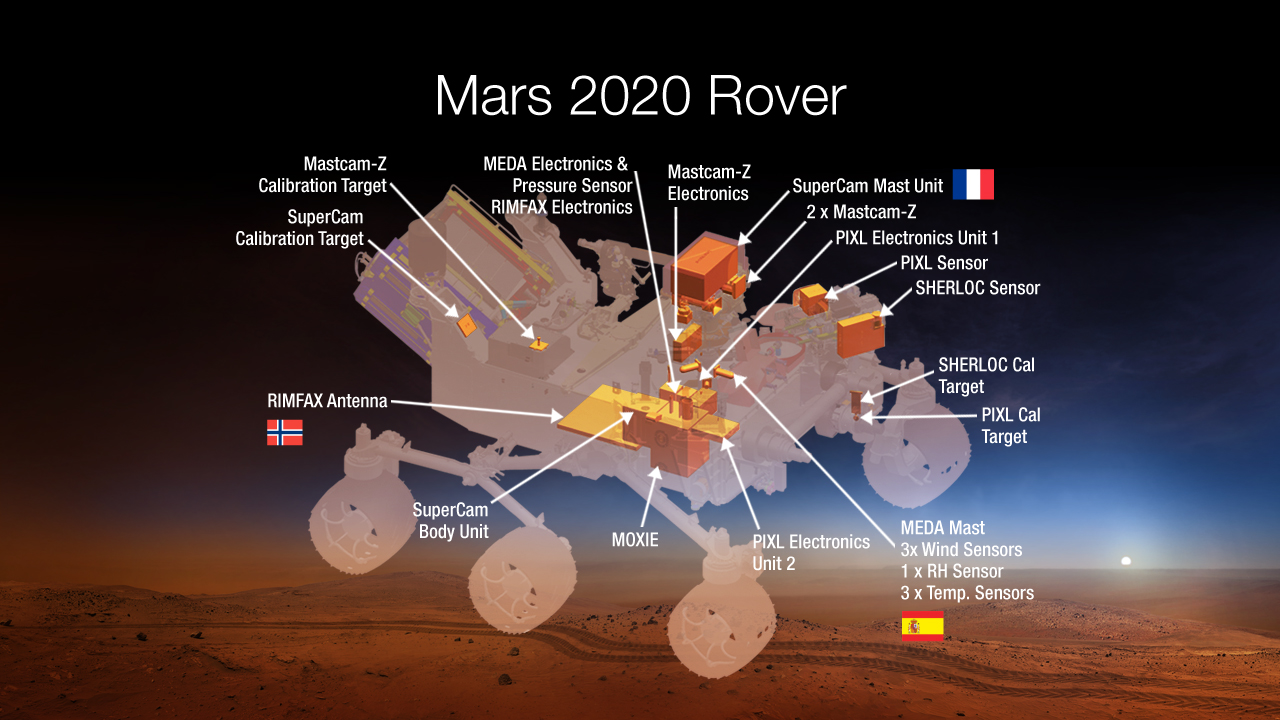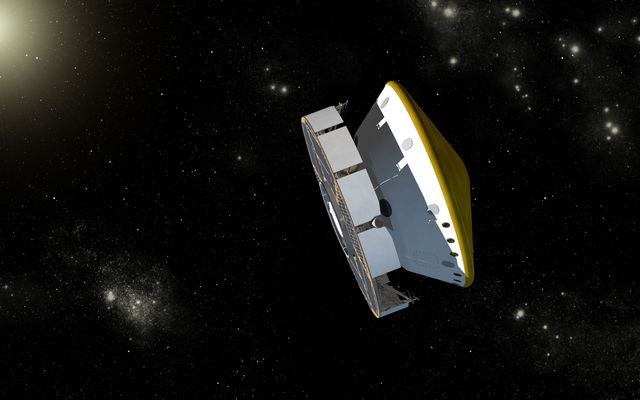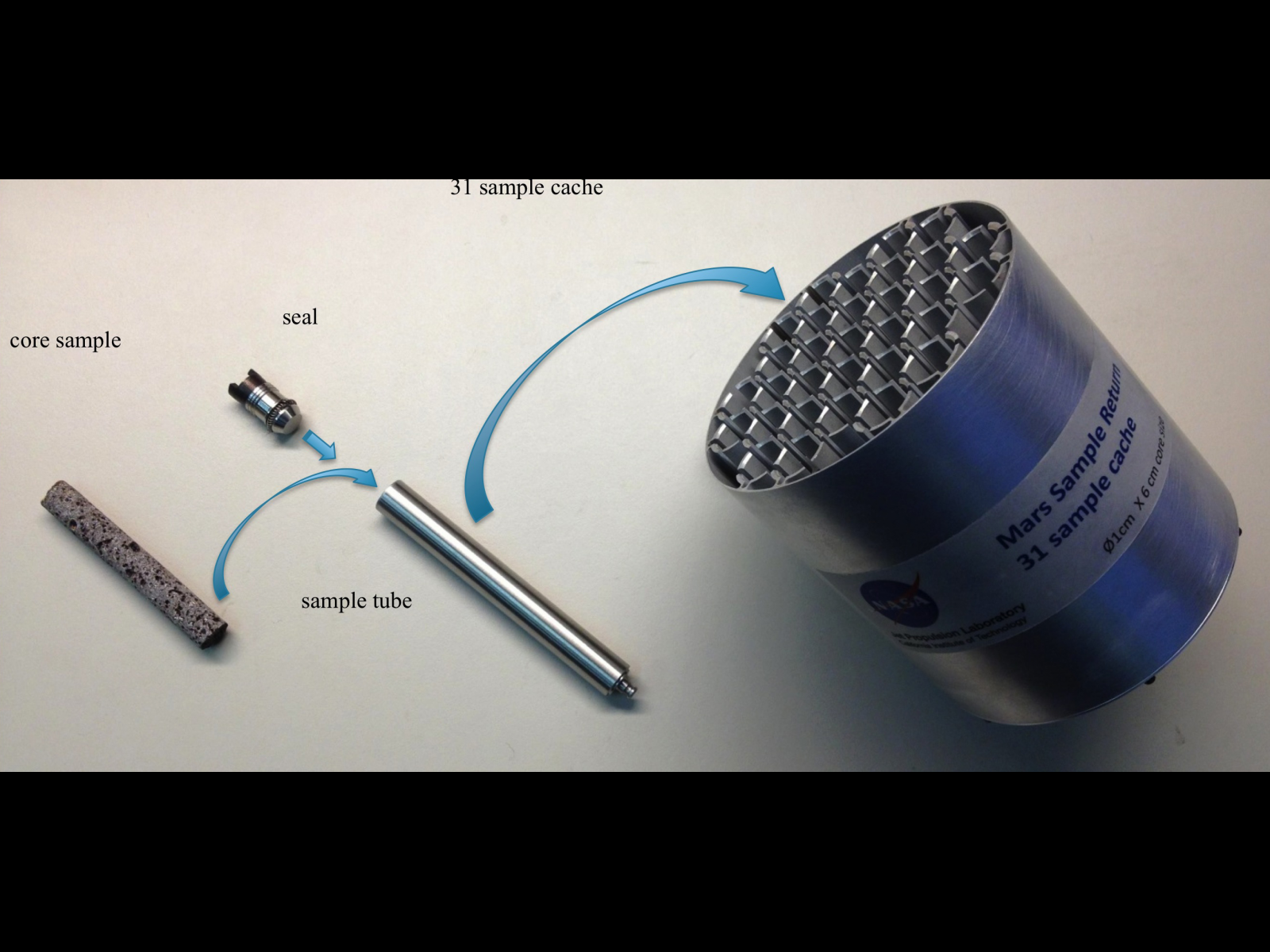How Much Contamination is OK on NASA's Mars 2020 Rover?

When NASA's Mars 2020 rover arrives on the Red Planet, one of its primary mission goals will be to select and preserve samples that would eventually make it back to Earth for scientific study.
Rather than seeking to eliminate contamination of these samples completely — essentially an impossible task — a panel of scientists and engineers met to assess the levels at which significant science could still occur on Mars.
"The whole point of going [to Mars] and returning samples is that we don't know what's there and we want to find out," Alex Sessions, of the California Institute of Technology, told Astrobiology Magazine. "This makes knowing how much contamination is acceptable a rather ambiguous task." [The Life on Mars Search: A Photo Timeline]
Sessions served alongside Roger Summons, of the Massachusetts Institute of Technology, as co-chair of the Organic Contamination Panel for Mars 2020, which met to discuss the issue of Earth-side contamination.
"We want it [contamination] to be low enough to give us a good shot at seeing what we think could be there, without being overly conservative, which could cause the mission to be so expensive the whole thing gets scrapped."

Learning from the past
Concern about carrying contaminating organic material from Earth to Mars is not a new one; scientists and engineers have discussed this throughout the history of space exploration.
Get the Space.com Newsletter
Breaking space news, the latest updates on rocket launches, skywatching events and more!
Since there are remnants of microbial life, both dead and alive, everywhere on Earth, it is impossible to build spacecraft within the Earth's biosphere that are strictly biologically clean. Many of the panel's recommendations build upon processes utilized by previous missions, such as utilizing witness plates and blanks to track potential contamination.
Witness plates are materials that have defined open and closed periods at points throughout the mission, exposing and protecting them from environmental conditions. The plates serve as a background for the study of samples.
"By using a series of witness plates that are opened and closed at different times, it is possible to generate an understanding of the history of environmental contaminants as a function of time — and for a mission like Mars 2020, this could change significantly with time," said David Beaty, committee member and chief scientist for the Mars Exploration Directorate at NASA's Jet Propulsion Laboratoryin Pasadena, California.
Blanks are measured by operating an analytical instrument without any sample present. The resulting measurements help determine how much of the signal comes from sample preparation or instrument noise.
Another method Mars 2020 will utilize is the storage of all materials associated with the building of the spacecraft throughout the life of the mission, if not longer.

"As far as I'm aware, for Mars missions it's been a pretty standard procedure to keep samples of all organic materials used in each spacecraft," Sessions said. [NASA's Mars Rover 2020 Mission in Pictures (Gallery)]
This allows scientists and engineers to study the unexpected. For example, what happens if a piece of material becomes hotter or colder than anticipated, or if an instrument picks up a "funny component," as Session put it, that might be derived from a lubricant?
The results of the study were published on NASA's Astrobiology websiteand in the journal Astrobiology. The Organic Contamination Panel was a temporary group chartered and funded by NASA's Mars Exploration Program. Once the report was accepted, the panel was dissolved.
How clean is clean enough?
As helpful as they were, previous missions could only provide loose constraints on the issue of contamination for Mars 2020. Samples returned from Mars would be thoroughly studied on Earth for signs of past or present life in detail that is not possible for remote-controlled rovers operating on the Red Planet.
The first order of business involved determining just how much contamination would be acceptable. In a perfect world, samples obtained on Mars and brought to Earth would remain completely free of any terrestrial contamination, but such levels would be virtually impossible to attain.
Another issue was planning for a myriad of different examination techniques. With a variety of sensitive methods capable of detecting extremely low levels of contamination, plus the likelihood that future instruments will be capable of detecting even lower levels of contamination, it quickly became clear that no sample could realistically remain untouched.
"Zero contamination is effectively impossible to do," Sessions said. "Whether in nanograms or picograms, at some level, there's always going to be something there."
Reaching an acceptable level of contamination proved a fairly challenging issue for the panel. Sessions said there was a "diversity of opinions about the right balance between cleanliness and cost."
Although all team members wanted contamination to be as low as reasonably achievable, it was not entirely clear what factors (including both technical and financial) limit achievability. Some members argued for a modest level of acceptable contamination, while others stressed that the mission was a "once in 50 years" opportunity and should be as contaminant-free as possible. [Mars Could Have Supported Life, NASA Finds (Video)]
As with previous missions, the manufacturing and assembly of the instruments provide ample opportunity for contamination.
"The first challenge is just building a spacecraft and a rover that doesn't contaminate itself," Sessions said.
This is hard enough with organic contamination, but when combined with other requirements having to do with inorganic contamination, planetary protection, performance, weight, and more, the engineering of such a spacecraft becomes exceedingly difficult.
"When you combine all of those materials you can't have, you have nothing left to make the spacecraft out of, because everyone's worried about something," Sessions said.
The sample collection tubes can be baked in a hot oven. As temperatures reach 930 degrees Fahrenheit) (500 degrees Celsius), any organic materials are baked away and/or oxidized into carbon dioxide. As long as the materials can withstand those temperatures, it comes out of the oven completely clean. Contamination from air — specifically, air on Earth — is harder to avoid.
"Air is full or organic compounds — particles such as dust, volatiles in the form of gas," Sessions said. "At the level of parts per billion, they're everywhere."
These can be derived from plants, fuels, paints, cleaners, and even humans. Over a timescale of hours to days, these volatile organic compounds will be rapidly absorbed onto a clean surface. The question thus quickly becomes, How clean can we keep the sample collection apparatus?
On the surface, the answer appears simple — put the sample collection tools inside an airtight bag and transport it to Mars, keeping the material from ever coming in contact with Earth's atmosphere. But such a solution comes with its own problems.
"The engineers were very worried about this," Sessions said. "Imagine getting to Mars, and you can't get the bags open."
The discussion over the right balance between feasibility and contamination became a major focal point for the deliberations, Sessions said. If the panel recommended a very low level of contamination that required complete containment, that would increase the complexity, risk and expense of the mission.
Ultimately, the panel recommended a level that is near the bottom of what can probably be achieved without containment. Thus complete isolation of sampling apparatus from air is not required, but might ultimately be an easier solution to achieving such stringent levels.
No clear scientific answer
Chartered by NASA, the Mars 2020 Organic Contamination Panel was composed of Mars-experienced scientists and engineers. Other non-voting technical experts were called upon for specific advice.
"The highest-level goal was to protect the science, not to make the engineering easy," Sessions said. “The problem was that we do not know, in an absolute sense, what is required to protect the science.”
The concentration of organic molecules of interest in the samples to be collected remains unknown, making it difficult to specify how much contamination would meaningfully interfere with its detection. The impact on mission cost of specifying a maximum allowable contamination limit is clearly important. However, the OCP did not attempt to quantify this.
"That's not to say we don't care about the cost, but that we did not have any information about the costs of different options to consider them," Sessions said.
For instance, on the issue of encapsulating the sample-taking equipment, the team didn't know whether the cost would be $1 million or $1 billion. For better or for worse, this kept them from deciding if the tradeoff of a lower contamination threshold would be worth the cost.
"Spacecraft missions have lots of constraints," Beaty said. "The challenge is keeping the contamination down without violating any of these mission constraints."
Sessions stressed that the final recommendation came about only after a significant amount of discussion.
"This was a pretty vigorous debate, in terms of people with quite different opinions about what the right answer was trying to find some consensus," he said. "We could not find criteria from which to derive a specific scientific answer."
He compared the process to negotiating a treaty, where everyone on board had to find some middle ground.
"The stakes were pretty high on both sides," he said.
No one wanted to require contamination levels so strict, without a clear scientific need for such levels, that NASA would be forced to abandon the mission. Nor did they want to allow so much contamination that the samples that returned from Mars would be unusable, or would deliver ambiguous results.
"There are multiple possibilities for going down in flames," Sessions said. "All we can do now is hope that we found the right balance: the mission goes ahead, the samples come back, and we were conservative enough."
This story was provided by Astrobiology Magazine, a web-based publication sponsored by the NASA astrobiology program. Follow Nola Taylor Redd on Twitter @NolaTRedd. Follow us @Spacedotcom, Facebook and Google+.
Join our Space Forums to keep talking space on the latest missions, night sky and more! And if you have a news tip, correction or comment, let us know at: community@space.com.

Nola Taylor Tillman is a contributing writer for Space.com. She loves all things space and astronomy-related, and enjoys the opportunity to learn more. She has a Bachelor’s degree in English and Astrophysics from Agnes Scott college and served as an intern at Sky & Telescope magazine. In her free time, she homeschools her four children. Follow her on Twitter at @NolaTRedd











